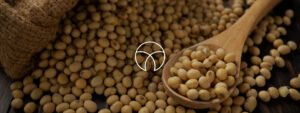Chaque année, la Chine renforce sa position sur le marché mondial des produits laitiers. Le pays est un important producteur de lait – en 2019, la Chine s’est classée au 5e rang des producteurs de lait avec une production estimée à 31 millions de tonnes métriques et l’année dernière, elle est passée au 4e rang avec 33 millions de tonnes métriques de ce produit. Cependant, la demande de produits laitiers augmente à un rythme élevé et le gouvernement chinois continue de mettre en œuvre les procédures qui visent finalement à stimuler la production nationale à 45 millions de tonnes d’ici 2025.
La situation actuelle
Le secteur laitier chinois se développe rapidement en réponse à une demande fortement accrue de lait et de produits laitiers. Afin d’atteindre l’objectif ambitieux de production nationale, la Chine devra faire face à certains problèmes importants. Actuellement, la production locale permet de couvrir environ 70 % de la consommation chinoise de produits laitiers, mais la capacité de production du pays doit suivre la demande à venir. La production nationale de la Chine est coûteuse et entraîne une dépendance à l’égard des importations internationales – en 2020, le pays a acheté 3,37 millions de tonnes métriques de produits laitiers.
Une production en croissance
L’un des facteurs responsables des coûts de production élevés est la limitation du fourrage animal domestique – les fabricants doivent souvent importer des céréales et du lait en poudre. Néanmoins, des tendances positives se dégagent également du secteur laitier chinois. Bien que le nombre total de vaches laitières devrait diminuer lentement, passant de 6,15 millions en 2020 à 5,94 millions en 2025, le nombre moyen de vaches par exploitation augmente rapidement. La capacité de production augmente également – en 2017, le rendement annuel moyen par vache était de 4 600 kilogrammes, mais il devrait passer à plus de 5 500 kilogrammes d’ici 2024.
Consolidation
Au cours des dernières années, les petites entreprises possédant jusqu’à quelques centaines de vaches ont été incorporées par les plus grandes, qui peuvent désormais présenter un troupeau impressionnant comptant même des dizaines de milliers de vaches laitières. Les plus grands acteurs ont pu s’adapter plus précisément à l’évolution de la réglementation et, grâce aux progrès technologiques et aux connaissances professionnelles, ils peuvent aujourd’hui obtenir un rendement quotidien moyen de 30 à 40 kg de produit par vache.
Modernisation
Une autre particularité typique des exploitations chinoises est que le travail est rarement automatisé – les grandes rotatives de traite sont à la mode tandis que les systèmes de traite automatisés sont plutôt rares. Cela s’explique par les possibilités étendues d’embauche d’employés dans les exploitations laitières en Chine et par le fait que les entreprises ne sont pas obligées d’investir dans l’assistance technologique. Toutefois, les producteurs laitiers utilisent de plus en plus les rations totales mélangées (RTM) comme fourrage. La part des fabricants appliquant la technologie TMR est passée de 30 % à 90 % entre 2008 et 2018, ce qui est le signe d’une modernisation accrue.
L’avenir du marché laitier chinois
Des données récentes estiment que la production laitière chinoise atteindra 34,5 millions de tonnes métriques en 2021 – soit une croissance de 5 % par rapport à l’année précédente. Dans les grandes exploitations, le rendement moyen par vache devrait atteindre 8 tonnes en 2020. Pour l’avenir, les experts prévoient que le marché laitier chinois connaîtra une nouvelle diminution du nombre de petites exploitations au profit d’un plus grand nombre de producteurs à grande échelle possédant au moins 3 000 vaches. Une évolution modérée vers l’automatisation est également attendue, car les tendances à l’urbanisation pourraient limiter la disponibilité de la main-d’œuvre. Le gouvernement chinois devra continuer à soutenir les agriculteurs par le biais de programmes d’aide et en renforçant les marques nationales.








